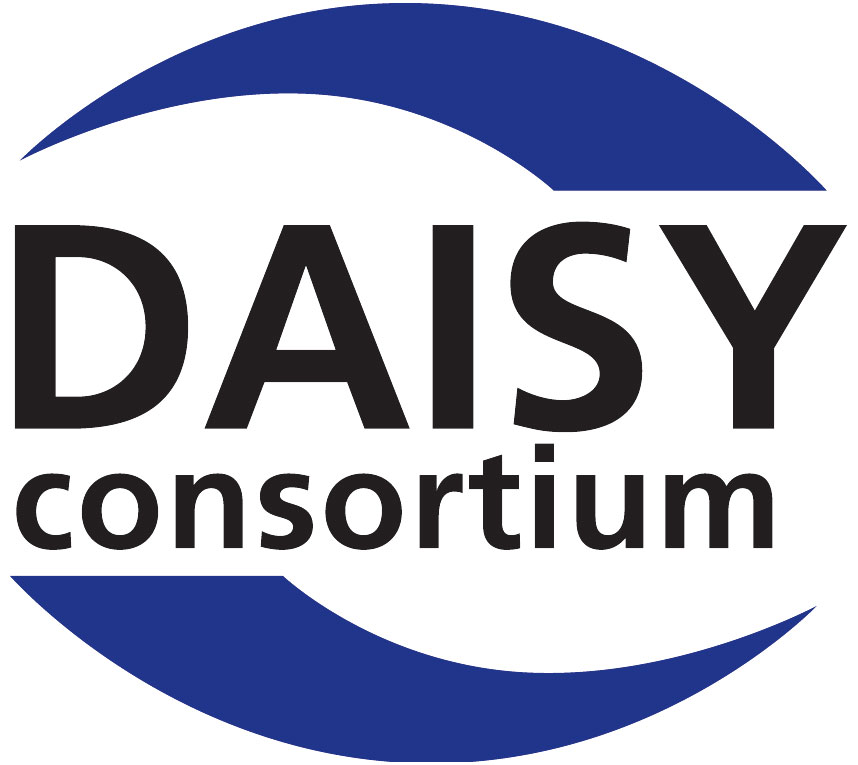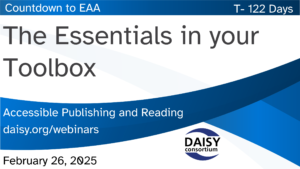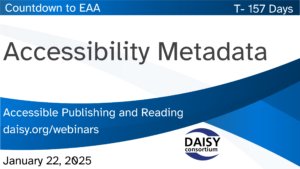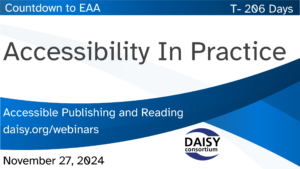Articles archive
Artificial Intelligence is a new technology that is advancing so rapidly it appears to be constantly in the news. Reports…
The DAISY Consortium is delighted to once again support the CSUN Assistive Technology Conference by creating accessible digital versions of the conference materials,…
In our series of free weekly webinars February 26th saw a session focused on The Essentials in Your Toolbox, showcasing a…
At DAISY we closely follow the latest developments in AI, working with companies to test and provide feedback on some…
In our series of free weekly webinars November 27th saw a session focused on Accessibility in Practice, which coincided with the…
In our series of EAA monthly webinars October 23rd saw a session that explored innovations being made to improve the…
In our series of EAA monthly webinars September 25th saw a session that explored the practical workflow approaches available to…
The IFLA Library Services for Persons with Print Disabilities Section (LPD) Section organized a seminar hosted by the National Library…










